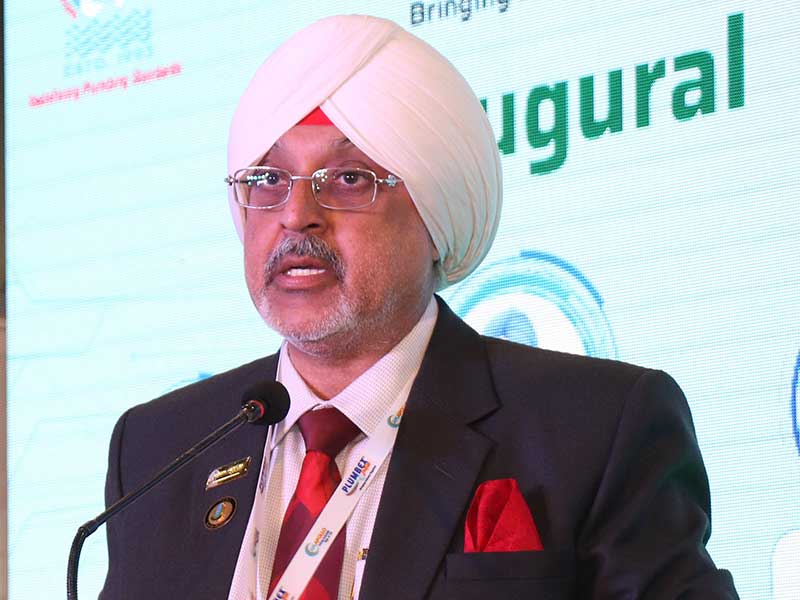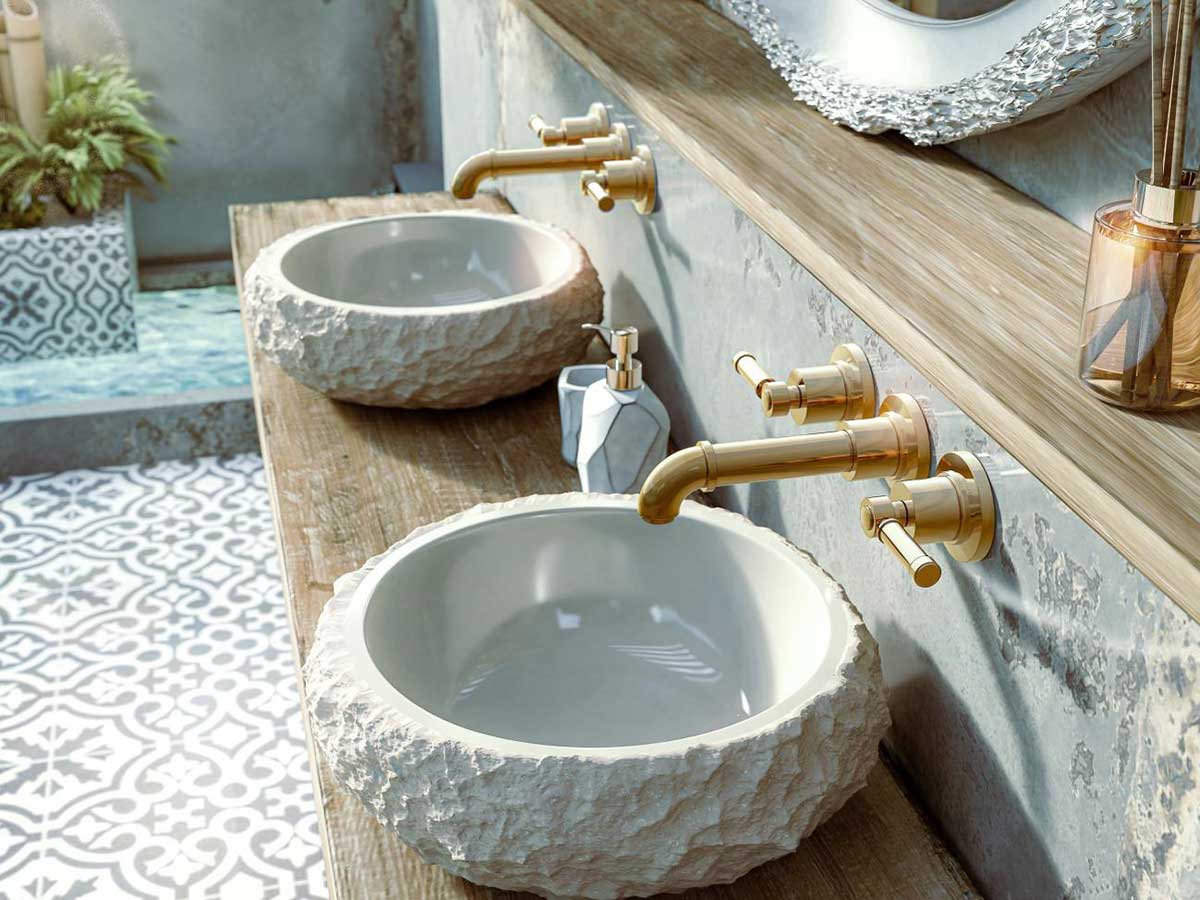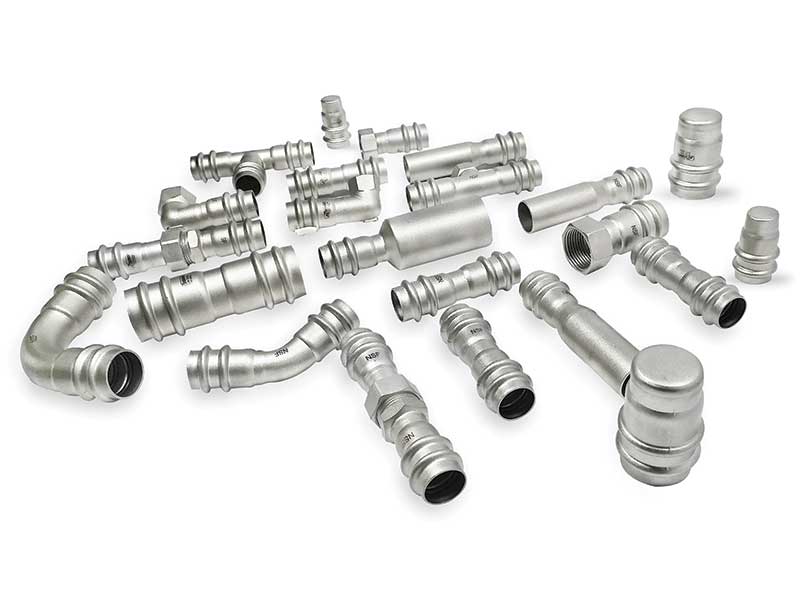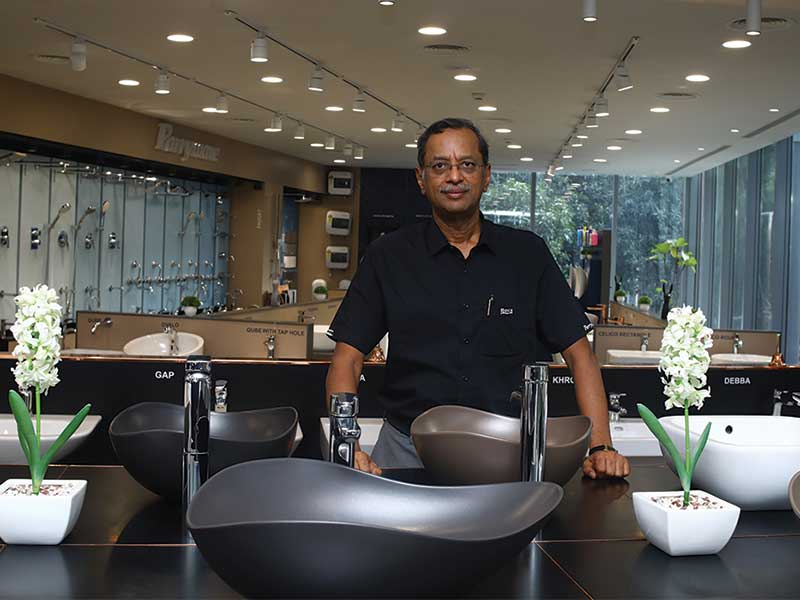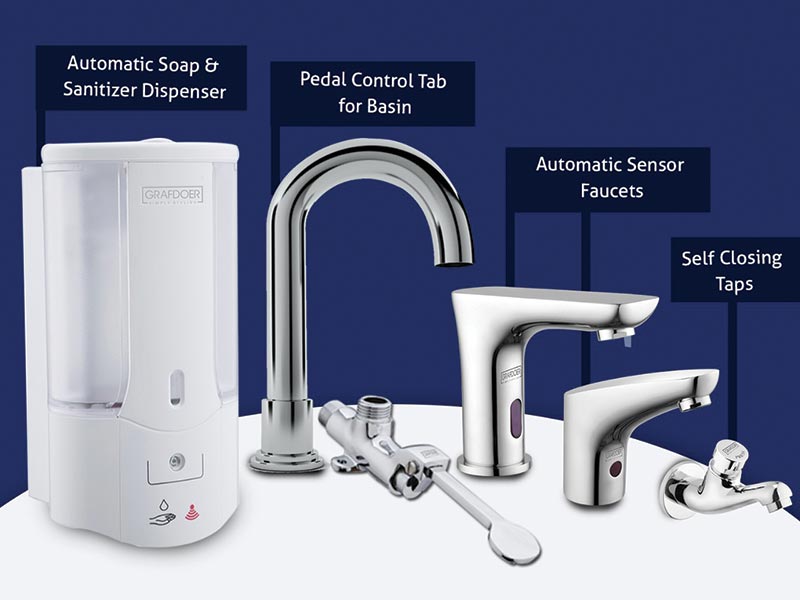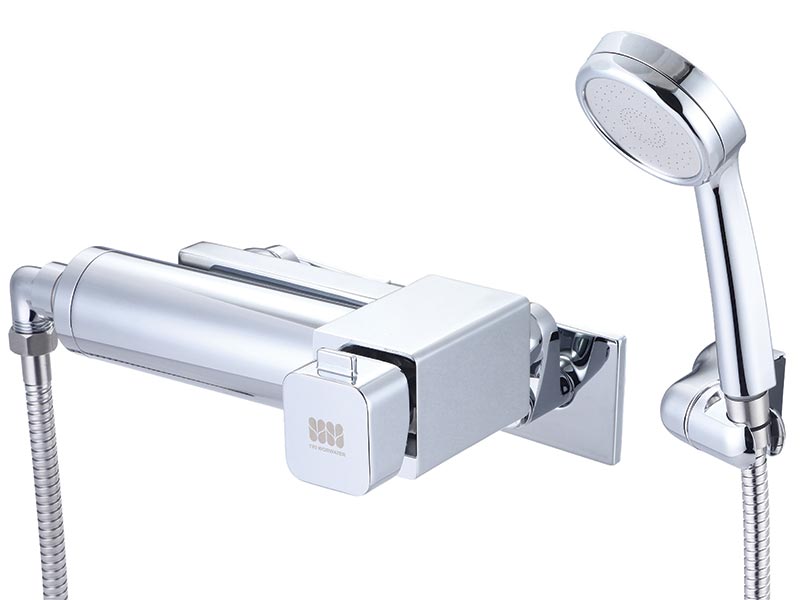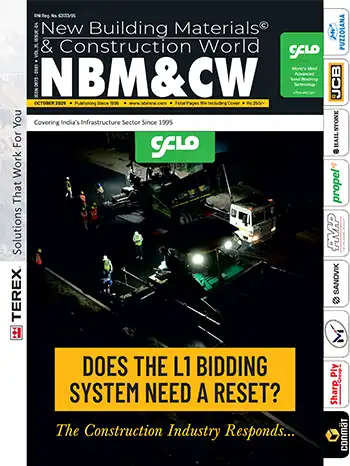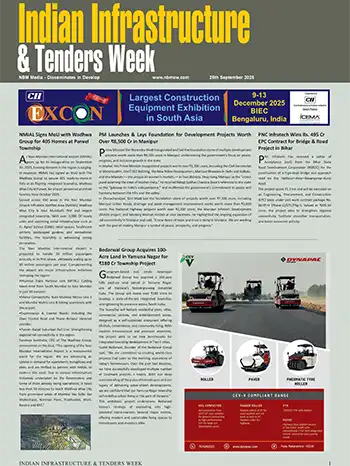What are the latest trends in faucet design and finishes?
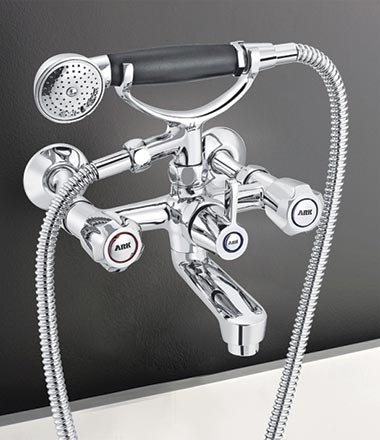
Convenience or ease of operation is the other driving factor in bath fittings design. Since the modern customer is usually time deprived, he/she expects the process of water deliverance to be easy and fast. As a result, Q/T assemblies that open / shut completely in 90 degrees, have replaced earlier assemblies that opened / closed in 720/540/360 or 180 degrees. Consequently, operating knobs too have changed with the lever type handle now ubiquitous instead of the earlier round with grip handles.
During the 1990s, coloured finishes in sanitary fittings were a rage. However, owing to the moist environs in which sanitary fittings operate, and as a result of constant interaction with water, most of these adhesion-based coloured fittings went out of vogue due to the poor lives of the finishes. Chrome over nickel electroplating has remained popular over 50-60 years due to its long life and resistance to scaling. Now coloured finishes are again making a comeback with the advent of the physical vapour deposition (PVD) technology.
What features should a home owner look for when selecting faucets?
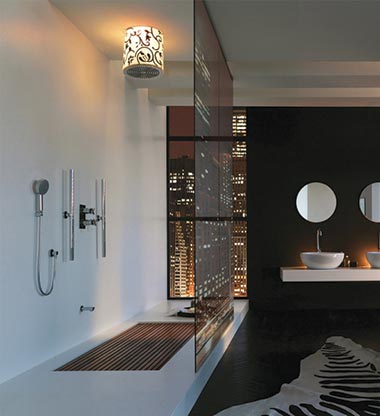
The higher the overhead tank is from a floor, the more water pressure it will get. Typically, the top floor would have water pressures ranging from 0.7 to 1.2 bars, the floor beneath it would have pressures between 1.5 to 2 bars and these pressures would keep coming down to the ground floor unless there is a multi-floor tank storage system in place.
While certain fittings like single lever faucets, multi-function showers, dream showers, steam rooms etc work best in higher pressures (2-2.5 bars), many fittings like health faucets, push cocks work best in lower pressures (0.7-1.5 bars). Also, it is in the best interest of the house owner to not allow extremes of water pressures in any case as they will not get good discharge if the flow is less than 0.7 bars, while there would be frequent maintenance issues if the water pressure exceeds 2.5 bars, given the commonly used pipe technology.
The house owner must also look at various locations in his/her house where he/she would require water to be delivered: there would be basins, sinks, bathing areas, toilets, car wash areas, washing machine areas, typically. Most of these spots are served from the overhead tank. Complications will arise when hot water too is required at some of these places. So instead of single body taps like pillars, bibs and concealed valves, the customer has to go in for wall-mounted or deck-mounted mixers or diverters to enable hot water mixing.

Suffice it to say that almost 90% of the maintenance requirement in faucets pertains to changing the rubber seals that give way due to harsh water conditions
Gauri Singh Shandilaya, Managing Director, Crystal Sanitary Fittings
If the house owner is worried about hygiene, he/she might want touch-free sensor faucets instead of normal handle or lever faucets. There is also a growing awareness on the need to save water. Most faucets, nowadays, come equipped with aerators that claim to save 50% water consumption. In case of extreme water consumption as in some metros, the house owner should install a water management system (WMS) between his/her overhead tank and the ground water tank. The WMS comprises of a pressure booster and a water level controller. This keeps water pressure in the plumbing pipes and the level of water in the overhead tank in prime condition, for assured top-class water delivery.
What is the lifespan and maintenance requirements of Crystal’s Ark brand of products?
Typically, the main constituent of faucets is brass, which is an alloy of copper and zinc, brought together to achieve optimum level of ductility, malleability, strength, and anti-rusting. Anti-rusting is a starting point if one considers that we are dealing with water that facilitates rusting and scaling. Having got the metal composition right, one must now ensure proper anti-leakage sealing.
A good brass faucet can typically last eternally, almost. Fittings installed within a house and protected from the vagaries of nature, will only need maintenance requirement such as change in rubber sealing, which would be necessitated due to the salt deposits in water. If water is hard, as in coastal and desert areas, then the rubber seals might need frequent replacements.
The basic brass constituent of the fitting once installed, can typically stand for decades, unless exposed to extreme conditions. Hard water can corrode the insides, or careless mishandling such as putting body weight or bucket filled weight on the faucet, which could lead to its breakage. Suffice it to say that almost 90% of the maintenance requirement in faucets pertains to changing the rubber seals that give way due to harsh water conditions.
How has the Indian faucet industry grown vis a vis import?
The Indian faucet industry has been thriving for the past several decades - though most businesses are small to medium, except for a handful of high-end players. Delhi, Jamnagar, Chandigarh, Jalandhar, and Meerut are some places in North India where many faucet manufacturers have established themselves.
Although there has been a shift towards branded faucets in the last three decades, the unorganized sector is still thriving in India. So, it is not uncommon to find regional city specific or state specific local brands operating in many regions.
It is only if one looks at the cheap quality ‘use-and-throw’ products or at high-end smart faucets that one sees imported products infiltrating the market. Low-end showers, health faucets, hoses, stainless steel accessories are being imported from China, whereas many industry veterans are collaborating with European manufacturers to bring in top-of-the-line high technology products like LED, audio, aromatic showers and smart programmable technology faucets for the elite and high-end customers in India. Several multi-national brands have also entered the Indian market looking at the huge potential that the Indian middle class and lower middle class offers.
What are the advantages and disadvantages of Indian make of faucets vis a vis multi-national brands?
One must look at the basic plumbing systems that exist in India to understand the differences. Much of the faucets made in India during the period of organized sector consolidation were single body taps (pillars, bibs, concealed valves and angle valves), which initially housed a gland dori-based assembly and later a screw-down seat holder-based assembly.
While in the Western word, mixers and ceramic disc-based technology has been in vogue for quite a while, and it is easy to understand why. European countries need hot water throughout the year, hence mixing faucets were invented at an early stage there. Secondly, water pressures in Europe are typically high due to a lower population density and because of better technology of plumbing.
In India, most of the central, western, and southern regions don’t experience extreme cold. Hence, almost 75-80% customers were quite happy with the pillars and bibs produced. Those that wanted hot water, typically used a separate stand-alone pillar or bib, and mixed water in the receptacle or the container. Also, owing to a higher population density and poor water transfer technology (with leakages rampant along the way), water pressures in India are typically low. Under lower pressures, the seat holder screw-down spindles give better performance than the ceramic disc technology ones.
These differences notwithstanding, the modern era is seeing a convergence of technology, driven by customers looking at more features and convenience.
What are the company’s manufacturing and R&D capabilities?
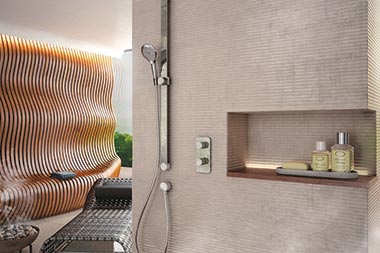
We are the only faucet manufacturing company in India to be ISO 9001:2015 certified and IS 8931:1994 registered for one of our economy ranges. We have a multi- layered quality inspection system that starts at the stage of brass composition and monitoring till the final dispatch.
Multi-stage inspection is carried out after each stage of manufacturing through calibrated equipment and gauges as per national and international standards. Rigorous tests ensure that load bearing areas or parts of the faucets are strong enough to withstand decades of usage. Rubber seals of the best quality are used to ensure durable and long-lasing performance, even in trying conditions of water supply in India.
We have BIS-backed inspection systems in place to ensure thick layers of Ni and Cr on the brass that are also resistant to corrosion and tough conditions of usage. Hoses and pipes are checked for temperature and pressure, while spindle assemblies are tested for strength, composition and disc quality, to ensure that they run for over 10,00,00 cycles in normal conditions of water supply.
Assembled faucets are checked via pneumatic as well as hydraulic equipment at high pressure to ensure that only the best faucets are dispatched to the customer. A number of periodic checks and product audits also augment the routine and daily checks.
Please name some of your important clients.
We are catering to the private and public sectors besides individual home owners. Our clients include the PWD, NIFT, CPWD, PMCH, L&T, Airports, AIIMS, Hyatt, The Indian Railways, Big Bazaar, CMS School, IIT, Big Bazaar and many others.




